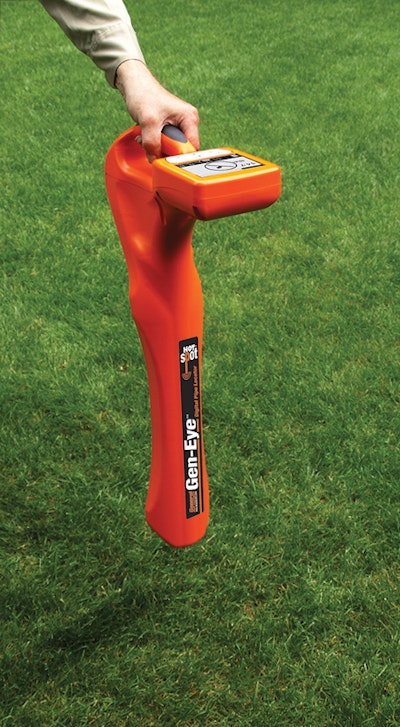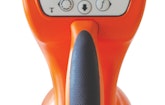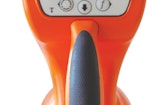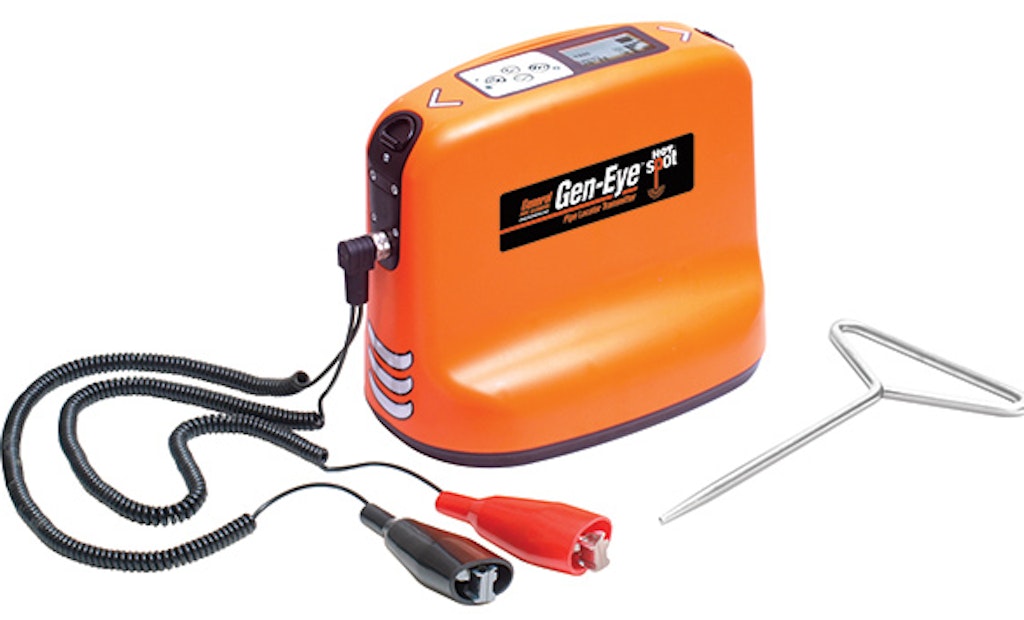Interested in Cleaning?
Get Cleaning articles, news and videos right in your inbox! Sign up now.
Cleaning + Get AlertsThe Gen-Eye Hot-Spot pipe locator from General Pipe Cleaners is designed to lessen the learning curve. On-screen arrows and icons enable first-time users to locate inspection cameras, sondes, active power lines and utility lines without having to interpret numbers and graphs.
“It used to be you’d get a series of numbers and a bar graph on a screen and you would have to figure out where the camera was,” says Marty Silverman, vice president of marketing. “With this, there’s an arrow on the screen that says, ‘Go that way.’ And when you get there, a target comes on and says, ‘You’re here.” So it’s much more intuitive, much easier for someone who is new to locating.”
Signal strength and bar graph also are displayed for more experienced users along with battery strength, sonde, antenna and frequency. “We made this for someone who is new to locating as well as someone who is experienced,” he says.
Upon locating the target, four arrows point toward each other to indicate the null point. The direction compass indicates which way to rotate the locator to be in line with the pipe. When the locator is directly over the camera a diamond inside a circle appears on the screen along with the depth of the object.
Total field antenna array enables users to work from any direction. The locator can pinpoint plastic and clay pipe down to 20 feet, cast iron to 10 feet, camera and sonde frequencies of 512 Hz and 33 kHz, and line and utility frequencies of 1 kHz, 8 kHz, 33 kHz and 65 kHz, as well as active power line frequencies of 60/50 Hz and 180/150 Hz.
Built for rugged use, the locator is dust and dirt proof, water resistant and IP65 rated.
“It’s been dropped from a 1-meter height at every angle of the unit,” Silverman says. “And a metal ball has been dropped from 18 inches on the screen. All these things are done to make sure it’s durable enough to survive the usual abuse in the field.”
Powered by two D-cell alkaline batteries, the locator provides approximately 30 hours of usage. For municipalities, simplicity and durability are its two key features, Silverman says.
The locator can be used in tandem with the 5-watt, 4-frequency (1 kHz, 8 kHz, 33 kHz, 65 kHz) Hot-Spot transmitter (10 by 12 by 8 inches) that can be used above pipes or clamped to tracer wires or gas lines. “Instead of again looking for the numbers, you walk a circle around the utility until a line pops up with the diamond in the middle, and you’re there,” Silverman says. “Both the locator and transmitter have a mini USB port that you can use to save screen shots. The software updates online.”
The 8-pound transmitter has an operating range of -4 to 122 degrees F, five power settings and uses 10 D-cell batteries for approximately 100 hours of life. 800/245-6200; www.drainbrain.com/hotspot.









